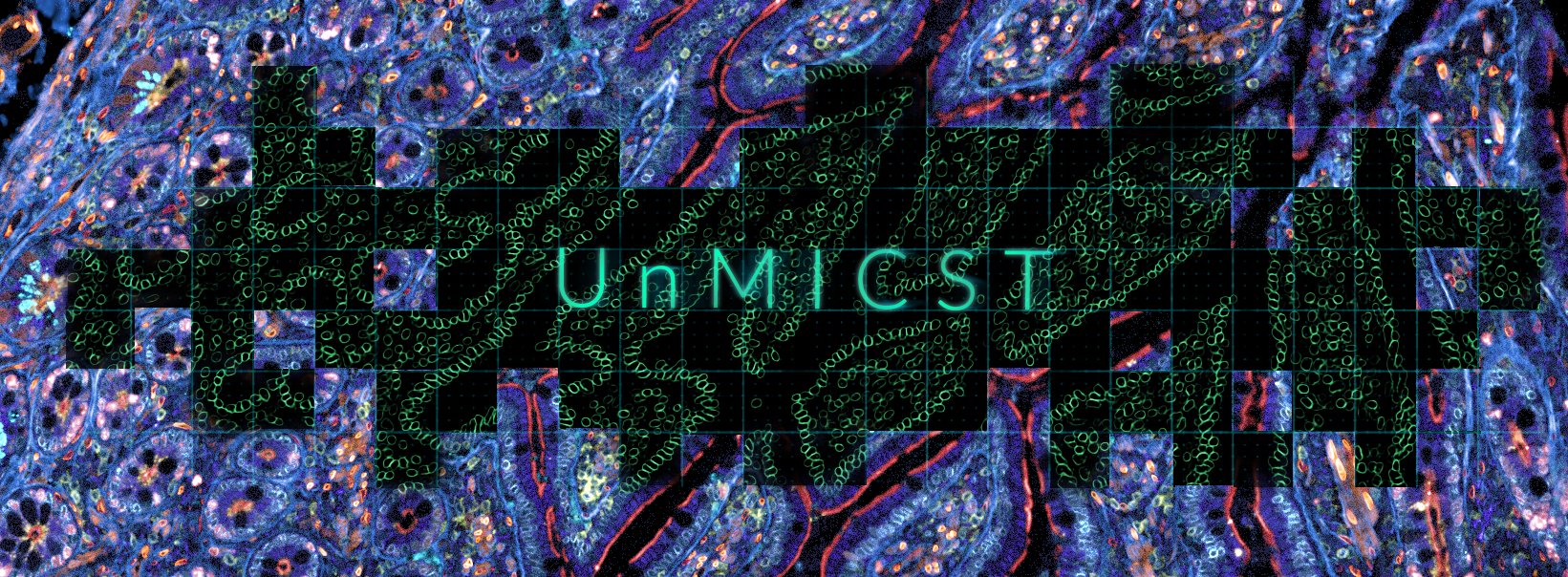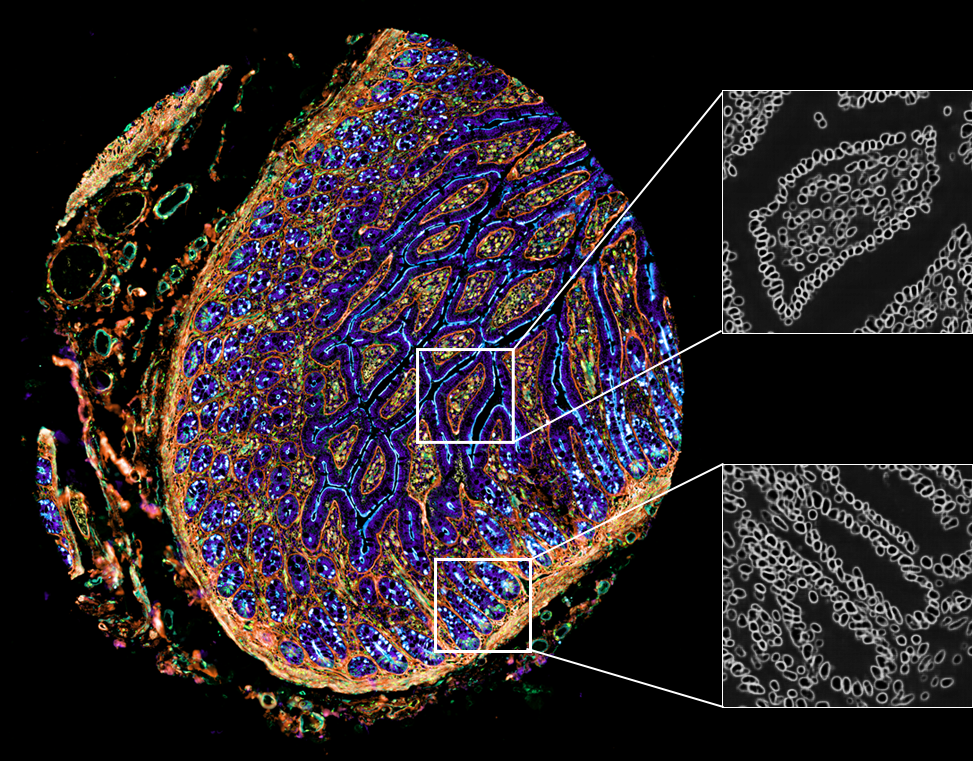UnMICST - Universal Models for Identifying Cells and Segmenting Tissue

(pronounced un-mixed)
Introduction
Nuclei segmentation, especially for tissues, is a challenging and unsolved problem. Convolutional neural networks are particularly well-suited for this task: separating the foreground class (nuclei pixels) from the background class. UnMICST generates probability maps (in the case of semantic segmentation) where the intensity at each pixel defines how confident the pixel has been correctly classified to the aforementioned classes, and bounding boxes with binary masks (instance segmentation). 
Contributions
Development of UnMICST is led by Clarence Yapp (Laboratory of Systems Pharmacology, Harvard Medical School), Edward Novikov and Won-Dong Jang (School of Engineering and Applied Sciences, Harvard University). Biorxiv preprint: https://www.biorxiv.org/content/10.1101/2021.04.02.438285v1
Contents
Code for training, testing and deploying models
Please see the /code folder for instructions on how to run scripts. Also included are scripts to either train or run specific models where the filename indicates the training scenario. Ie. DNA_NES_Aug indicates the script is designed for training with DNA, the nuclear envelope staining and real augmentation. DNA_NoAug indicates the model was only trained on the DNA channel.
Download training data and models
We provide training data, annotations and models that can be freely downloaded here upon account registration: www.synapse.org/unmicst
1./models contains UNet, Mask RCNN and PSPNet model files. Each model should be unzipped and placed at the same level as its corresponding script in the code folder.
2./training data contains a .rar file with the training, validation, and test data used to train the aforementioned UNet, Mask RCNN, and PSPNet models. In order to train new models using our scripts, this should be unzipped and placed at the same level as its corresponding script in the code folder
3.Annotations by tissue type contains the raw images and annotated labels prior to splitting into tiles and into a train/validation/test split. Approximately 10,400 nuclei from 7 tissue types (normal ovary, small intestine, tonsil, and cancers of colon, brain, lung, and prostate) were manually annotated.
Data Explorations

About Minerva
Exploring the primary image data in Yapp et al. (2021)
Yapp et al. (2021) contains a TMA core image that is over 1 GB. As part of the review process for this manuscript, we provide access to this data in the form of a Minerva story, a convenient and open source Minerva software designed for the Human Tumor Atlas Network (HTAN) by the Laboratory of Systems Pharmacology.
Minerva enables intuitive real-time exploration of very large (gigapixel) high-plex images in the cloud using a web browser. With Minerva, users can pan around and magnify areas of an image and switch between channels. Minerva does not require the installation of any software and is therefore secure; browsing is also anonymous. Users interested in the tool are welcome to explore the documentation, the software publication, and a description of digital docents in general.
We provide a Minerva story with this paper to provide access to minimally processed Level 2 images with annotation and interpretation kept to a bare minimum.
Funding Sources
NCI U2C-CA233262, NCI U54-CA225088, CCSP Supplemental Award, Gift from the Ludwig Institute for Cancer Research